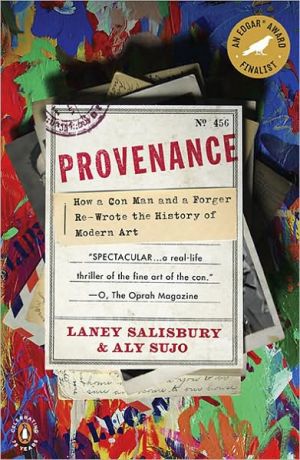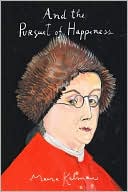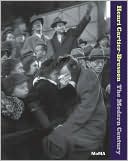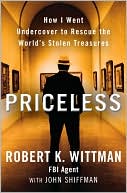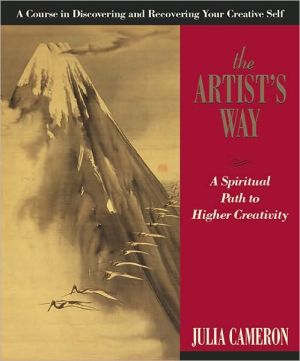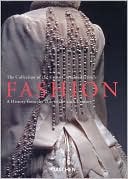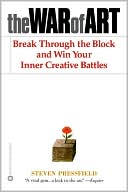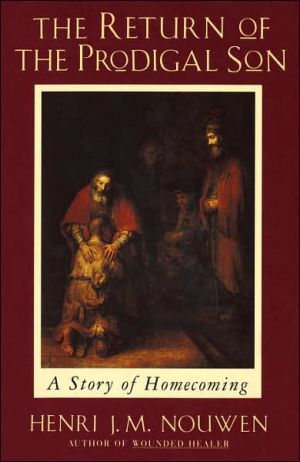Provenance: How a Con Man and a Forger Rewrote the History of Modern Art
The true story of one of the twentieth century's most audacious art frauds\ Filled with extraordinary characters and told at breakneck speed, Provenance reads like a well-plotted thriller. But this is most certainly not fiction. It is the astonishing narrative of one of the most far-reaching and elaborate cons in the history of art forgery. Stretching from London to Paris to New York, investigative reporters Laney Salisbury and Aly Sujo recount the tale of infamous con man and unforgettable...
Search in google:
A tautly paced investigation of one the 20th century's most audacious art frauds, which generated hundreds of forgeries-many of them still hanging in prominent museums and private collections todayProvenance is the extraordinary narrative of one of the most far-reaching and elaborate deceptions in art history. Investigative reporters Laney Salisbury and Aly Sujo brilliantly recount the tale of a great con man and unforgettable villain, John Drewe, and his sometimes unwitting accomplices.Chief among those was the struggling artist John Myatt, a vulnerable single father who was manipulated by Drewe into becoming a prolific art forger. Once Myatt had painted the pieces, the real fraud began. Drewe managed to infiltrate the archives of the upper echelons of the British art world in order to fake the provenance of Myatt's forged pieces, hoping to irrevocably legitimize the fakes while effectively rewriting art history.The story stretches from London to Paris to New York, from tony Manhattan art galleries to the esteemed Giacometti and Dubuffet associations, to the archives at the Tate Gallery. This enormous swindle resulted in the introduction of at least two hundred forged paintings, some of them breathtakingly good and most of them selling for hundreds of thousands of dollars. Many of these fakes are still out in the world, considered genuine and hung prominently in private houses, large galleries, and prestigious museums. And the sacred archives, undermined by John Drewe, remain tainted to this day.Provenance reads like a well-plotted thriller, filled with unforgettable characters and told at a breakneck pace. But this is most certainly not fiction; Provenance is the meticulously researched and captivating account of one of the greatest cons in the history of art forgery.The Washington Post - Steven LevingstonIf you've ever been had by a con man, as I once was at a cash machine in Salem, Mass., you know the odd aftermath of emotion. First, you're befuddled, then enraged and finally consumed by visions of revenge. But there's another sentiment that can sneak up on you. I was reminded of it while reading Laney Salisbury and Aly Sujo's well-crafted tale of British con artist John Drewe. I'd expected to despise the psychopath at the center of what Scotland Yard called the biggest art fraud of the 20th century. But somehow, from the first page, he got me to drop my guard. Drewe, for all his odious ambitions, is ingenious, persuasive, even brilliant. As I was pulled deeper into his deceptions, I couldn't help admiring this creep.
The grand moment in the reception finally arrived. Two white-gloved Tate conservators entered the room with a pair of paintings, each about five feet tall. There was a moment of respectful silence. Myatt was stunned.\ “Ahh, the Bissières, how lovely,”someone in the room whispered.\ Myatt cringed as the group praised the paintings and Drewe’s taste and generosity. The two works were carried around the room, and long before they reached Myatt, he recognized the faint but acrid smell of the varnish he had sprayed on them when he’d finished them a few weeks earlier.\ Myatt gripped his chair. If they so much as touched the canvas with a fine brush, the paint would give way and the game would be up. A little further investigative work would reveal that the pieces—purportedly painted more than forty years earlier—had been made with modern, ordinary house paint.\ The reception over, the Tate brass escorted Drewe and Myatt down the winding staircase. Stopping at a landing, one of the officials pointed at a place on the wall and said: “This is where we’ll hang these two wonderful pieces.”\ Placing a work at the Tate was a remarkable achievement for any artist—forger or not—but Myatt could see only one possible end to what had transpired. He had survived many low points in his past, but none as low as this. Surely he would end up in prison.\ Once in the taxi, Myatt, usually deferential toward Drewe, exploded. “You have to get them back.”\ Drewe argued that if they were to ask for the paintings back, it would involve a terrible loss of credibility, putting at risk all the time he had put into cultivating the confidence of the Tate’s archivists. But he also saw that as long as the twoc arelessly done forgeries remained in the hands of museum curators, Myatt would remain paralyzed by the fear that they would be his undoing.\ The following day Drewe was back at the Tate to withdraw the Bissières. There was a problem with their provenance, questions having to do with the previous owners. In place of the two works, he was prepared to offer a sizable cash donation to the Tate’s archives.\ Within days the Tate received a check for twenty thousand pounds (forty thousand dollars) to help catalog the archives, along with a promise of half a million more to come. With this donation, Drewe established himself as a respected donor for whom the doors of the heavily guarded archival department would stand open. The historical records of one of the world’s great museums, and its cherished credibility, were about to become irreparably compromised.
Dramatis Personae xiiiPrologue 11 "I Want a Nice Matisse" 72 Canvas Greed 153 Art for Sale 254 Crossing the Line 335 Mibus Wants His Money Back 386 Self-Made Man 457 Wreckers of Civilization 558 At the Easel 649 The Fine Art of Provenance 7210 Full Speed Ahead 8211 After Giacometti 9112 A Sinister Message 10013 The Bookworm 10714 The Paper Trail 11515 Falling Off a Log 12216 The Bow Tie 13017 Into the Whirlwind 13618 Standing Nude 14619 The Pond Man 15020 Myatt's Blue Period 16021 The Chameleon 17022 A Loaded Briefcase 17823 The Auschwitz Concert 18524 Extreme Prudence 19425 We're Not Alone 19926 A Slow Burn... 20327 The Art Squad 21128 The Macaroni Caper 21829 Nicked 22630 Aladdin's Cave 23231 The Fox 24832 Drewe Descending 26233 South 27334 The Trial 281Epilogue 291Authors' Note 307Acknowledgments 309Bibliography 313Index 317
\ From Barnes & NobleIn the '80s and early '90s, John Drewe, the con man in this book's subtitle, made millions of dollars on artwork that he didn't even paint. To perform the messy work of replication, this master fabricator enlisted the unwitting help of John Myatt, a semi-destitute artist, doling out small change for work that resembled the work of the likes of Matisse, Monet, and Turner. Then Drewe's own work began: With meticulous attention, he began constructing each painting's provenance, the intricate paper trail that establishes its authenticity. With his dirty work nearly done, he would then foist his fraud on unsuspecting or greedy dealers and other buyers. Husband-and-wife team Laney Salisbury and Aly Sujo tell the story of this beguiling manipulator with just the right combination of awe and disdain. Perfect prison reading for Bernard Madoff.\ \ \ \ \ \ Steven LevingstonIf you've ever been had by a con man, as I once was at a cash machine in Salem, Mass., you know the odd aftermath of emotion. First, you're befuddled, then enraged and finally consumed by visions of revenge. But there's another sentiment that can sneak up on you. I was reminded of it while reading Laney Salisbury and Aly Sujo's well-crafted tale of British con artist John Drewe. I'd expected to despise the psychopath at the center of what Scotland Yard called the biggest art fraud of the 20th century. But somehow, from the first page, he got me to drop my guard. Drewe, for all his odious ambitions, is ingenious, persuasive, even brilliant. As I was pulled deeper into his deceptions, I couldn't help admiring this creep.\ —The Washington Post\ \ \ Publishers WeeklyA decade-long art scam that sullied the integrity of museum archives and experts alike is elegantly recounted by husband-and-wife journalists Salisbury and Sujo. In 1986, when struggling painter and single father John Myatt advertised copies of famous paintings, he never imagined he'd become a key player in one of Britain's biggest art frauds. Myatt soon met John Drewe, who claimed to be a physicist and avid art collector. Soon Drewe, a silver-tongued con man, was passing off Myatt's work as genuine, including paintings in the style of artists like Giacometti and Ben Nicholson. When buyers expressed concern about the works' provenance, Drewe began the painstaking process of falsifying records of ownership. Posing as a benefactor, Drewe even planted false documents in the archives of London's Tate Gallery, but suspicious historians and archivists eventually assisted Scotland Yard in bringing him to justice. Salisbury and Sujo (who died in 2008) evoke with flair the plush art world and its penetration by the seductive Drewe as well as the other players in this fascinating art drama. (July 13)\ Copyright © Reed Business Information, a division of Reed Elsevier Inc. All rights reserved.\ \ \ \ \ The Wall Street JournalThomas Hoving, the former director of the Metropolitan Museum of Art in New York, once estimated that of the many thousands of artworks he had viewed in the course of his career, fully 40%, from all periods, were mis-attributed, restored beyond recognition or outright fakes. "Provenance" is the story of one of the more audacious and unusual art frauds of recent decades. Tautly written and -assiduously researched by Laney Salisbury and Aly Sujo (who died last year after the manuscript was completed), it has the pace and suspense of a good thriller, and a colorful -international cast.\ —By Ian Brunskill\ \ \ \ \ Kirkus ReviewsHusband-and-wife writing team Sujo (recently deceased) and Salisbury (co-author: The Cruelest Miles: The Heroic Story of Dogs and Men in a Race Against an Epidemic, 2005) present the story of what Scotland Yard called "the biggest art fraud of the twentieth century."In 1996, British con man John Drewe was convicted of forgery and theft, among other charges. Sujo and Salisbury carefully delineate how he wormed his way into some of the most tightly controlled art archives in the world. His scam-aided by the initially reluctant work of forger John Myatt-spanned ten years, hundreds of forged paintings and dozens of art galleries across the globe. The gripping narrative portrays Drewe as a master of creating pasts and telling people exactly what they want to hear, gathering and using even the tiniest pieces of information to gain the confidence of his marks. Though Myatt was a skilled forger who was able to produce convincing "originals" by modern painters such as Le Corbusier and Alberto Giacometti, it was Drewe's silver tongue-and pocketbook-that gained access to the materials from which he concocted convincing provenances of the artwork's originality. As a result, he not only committed fraud; he substantially undermined the system whereby works are authenticated, and thus art history itself. While the story of Drewe and his accomplices-many of them unwitting-is captivating, the narrative flow is occasionally interrupted by the insertion of seemingly irrelevant information. The authors don't always provide smooth transitions between the increasingly complex elements of the narrative, but the enthralling tale forces readers to rethink the question of what makes art valuable. A flawedbut ultimately mesmerizing portrait of the modern art market.\ \
